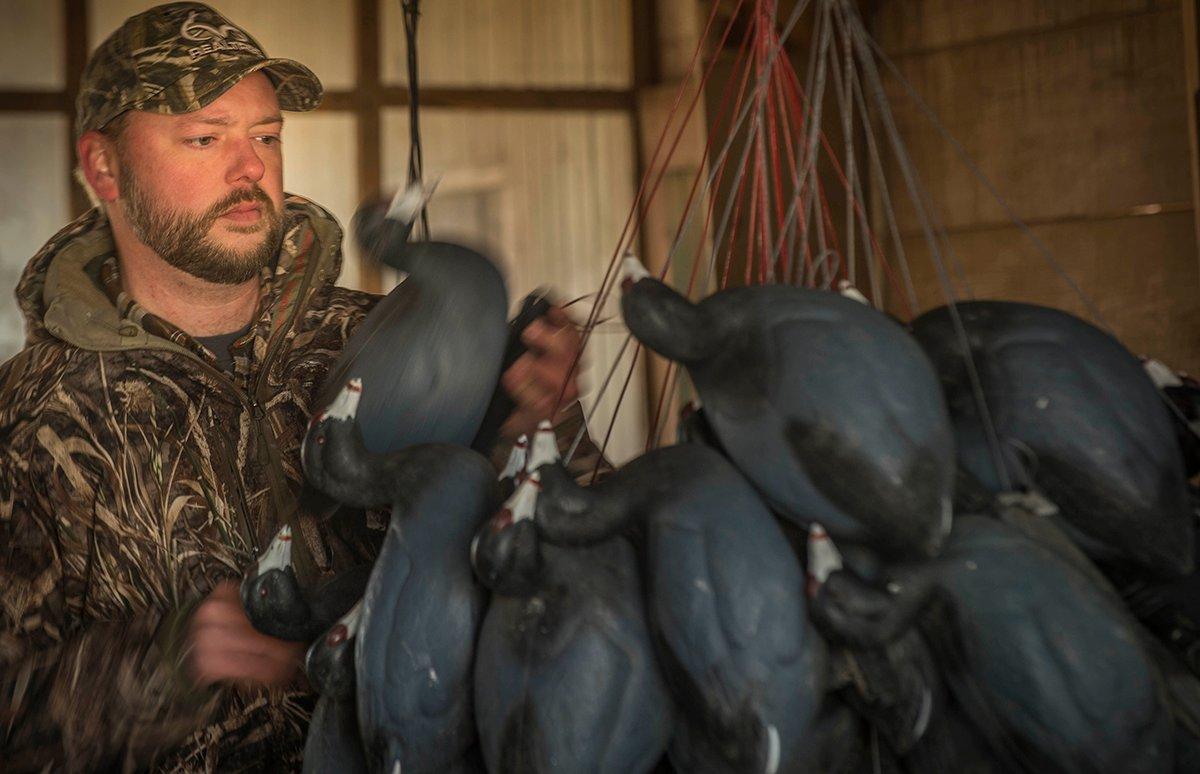Get tricky when trying to decoy spread-shy waterfowl
Sometimes, when the weather is warm, birds get stale and shooting is tough, the best way to decoy ducks is to abandon your duck decoys.
That's right; leave the mallards at home, and keep the bluebills in your boat. You can revisit them after the next cold front brings in waves of gullible, decoy-friendly waterfowl. Until that happy moment, adjust your decoy tactics to fool ultra-wary birds.
Coots
The lowly mudhen receives plenty of scorn from duck hunters, but this member of the rail family can be your best friend. Coots migrate relatively early in fall and often congregate in huge rafts on marshes and even big water. Ducks frequently mix with coots, and pressured birds associate oil-slick-like congregations of mudhens with safety and food. This is especially true with diving ducks, such as canvasbacks and ringnecks, but wary puddlers — especially mallards — also hang out with coot entourages.
When you observe this phenomenon, counter it by throwing out a large spread of coot decoys. Use a J-hook or similar spread if you like, but I typically space coots in a large, loose blob to resemble an ever-moving raft of feeding mudhens. This spread will absolutely attract other coots, and ducks mixed in with them usually follow. Plus, the dark bodies of the coot decoys are visible for long distances on big water, enhancing attraction.
Geese
No secret here: Ducks associate ultra-wary geese with food and safety. This is especially true in agricultural fields and on big water.
Usually, a moderate to large spread of goose decoys will attract mallards, wood ducks and black ducks in cut grain fields. Ducks know geese are extremely adept at finding quality chow, and they usually don't hesitate to join the party. There's really no need to mix in full-body duck decoys, unless you find it more aesthetically pleasing.
Likewise, a small to medium goose spread on lakes, large marshes or midday loafing areas can convince ducks to drop close for a look. Better, ducks can see the distinct black-and-white highlights on goose decoys from long distances.
None
Yep, nothing — no decoys. This doesn't seem to make sense, but I've seen it work many times. One warm fall in South Dakota, friends and I discovered a maze of small flooded potholes near a large slough. We tried decoy-hunting it with limited success until one buddy picked up his spread, found better cover and merely waited by a small, round hole for ducks. He filled up in an hour. I followed suit and finished out my limit in 45 minutes.
Sometimes, ducks and geese just want a familiar spot, and decoys actually seem to dissuade them or make them suspicious. Maybe small flocks are accustomed to having that area to themselves, or perhaps great eats bring birds back. Who knows?
Nowadays, when birds seem pressured or extra skittish, I sometimes go without decoys at tiny wood duck potholes, midday goose loafing areas or even secret mallard feeding spots, figuring birds want to be there anyway. Provided I hide well, the tactic works more often than not.
Decoy Duplicity
I'll admit, these strategies aren't as romantic as running a gorgeous mallard spread on a rice field or placing seven perfect multiple-decoy lines on big water. But tough times call for ingenuity, and I can deal with some funny looks at the landing if my skiff has a decent pile of ducks aboard.
Click here for more Realtree waterfowl hunting content. And check us out on Facebook.







